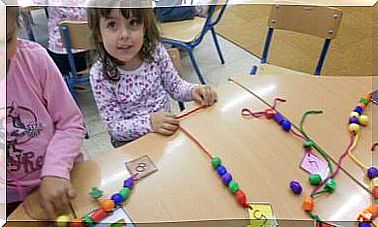The Dominance-submission Scheme In Bullying

The dominance-submission scheme in bullying perfectly explains the power imbalance between the aggressor and the victim. This is key for an episode of violence between students to be considered bullying.
Thus, whenever a bullying situation occurs, the victim feels weak, defenseless and vulnerable, while the bully feels strong and powerful.
The dominance-submission scheme in bullying
The fact that there is an imbalance of physical, social or psychological power between the victim and the bully is essential for bullying episodes to occur, since the attacked student is not in the same conditions to defend himself against continuous attacks. In other words, it is a situation of inequality and defenselessness on the part of the victim.
This can be explained through the dominance-submission scheme, according to which the stalker attributes a series of characteristics to the victim, such as:
- Weakness.
- Poor social skills
- Responsibility for your own weaknesses.

And, in turn, the victim attributes the following characteristics to his aggressor:
- Prepotency.
- Extensive social skills.
- Can.
- Invulnerability.
This allows the maintenance of a certain misunderstanding about the vulnerability of the victim and the impunity of the aggressor that allows the maintenance of the phenomenon of abuse. But the phenomenon of bullying does not consist of a bilateral relationship, but a trilateral one. That is, there are three agents involved:
- The victims.
- Stalkers.
- The witnesses.
In this way, they all interact with each other in a positive or negative way. This trilateral relationship is maintained by the law of silence and public condemnation of the informer or snitch.
The relationships established in the domain-submission scheme
The following links are created in the domain-submission scheme:
- Victim-aggressor. A relationship of dominance and submission is established between these students, which we have already commented on previously.
- Witness-victim. This relationship is created when bystanders break the existing imbalance of power in bullying, so that witnesses act as defenders of the victim, rejecting the violence exerted by the bully and his group of accomplices.
- Witness-aggressor. A toxic and negative link is established between these two agents, since the witnesses support, in some way, the violent behaviors carried out by the bullies, so that the colleagues assume one of the following roles:
- Reinforcers : when they are silent and passive, approving and reinforcing the behavior of bullying .
- Collaborators: when they join the harassment and carry out direct behaviors of mistreatment and humiliation towards the victim.

The school in the face of the dominance-submission scheme in bullying
Many times, schools and teachers make the following mistakes in dealing with bullying:
- Minimize the importance of the phenomenon of bullying.
- Maintain an attitude of passivity in the face of bullying and its prevention.
- Not putting into practice methodologies of support and respect for diversity.
- Do not make an effort to promote a climate of coexistence and cooperation in the classroom.
But, really, the school can prevent the dominance-submission scheme from occurring among the students. To do this, we must flee from traditional teaching methods and bet on more innovative ones, so that, in addition to the development of academic skills, content related to emotional intelligence is taught.
Therefore, the educational system has the responsibility to develop in children:
- Empathy
- Self-control.
- Responsible decision-making.
- Assertiveness.
- Social and communication skills.
- Problem solving through negotiation or mediation.










